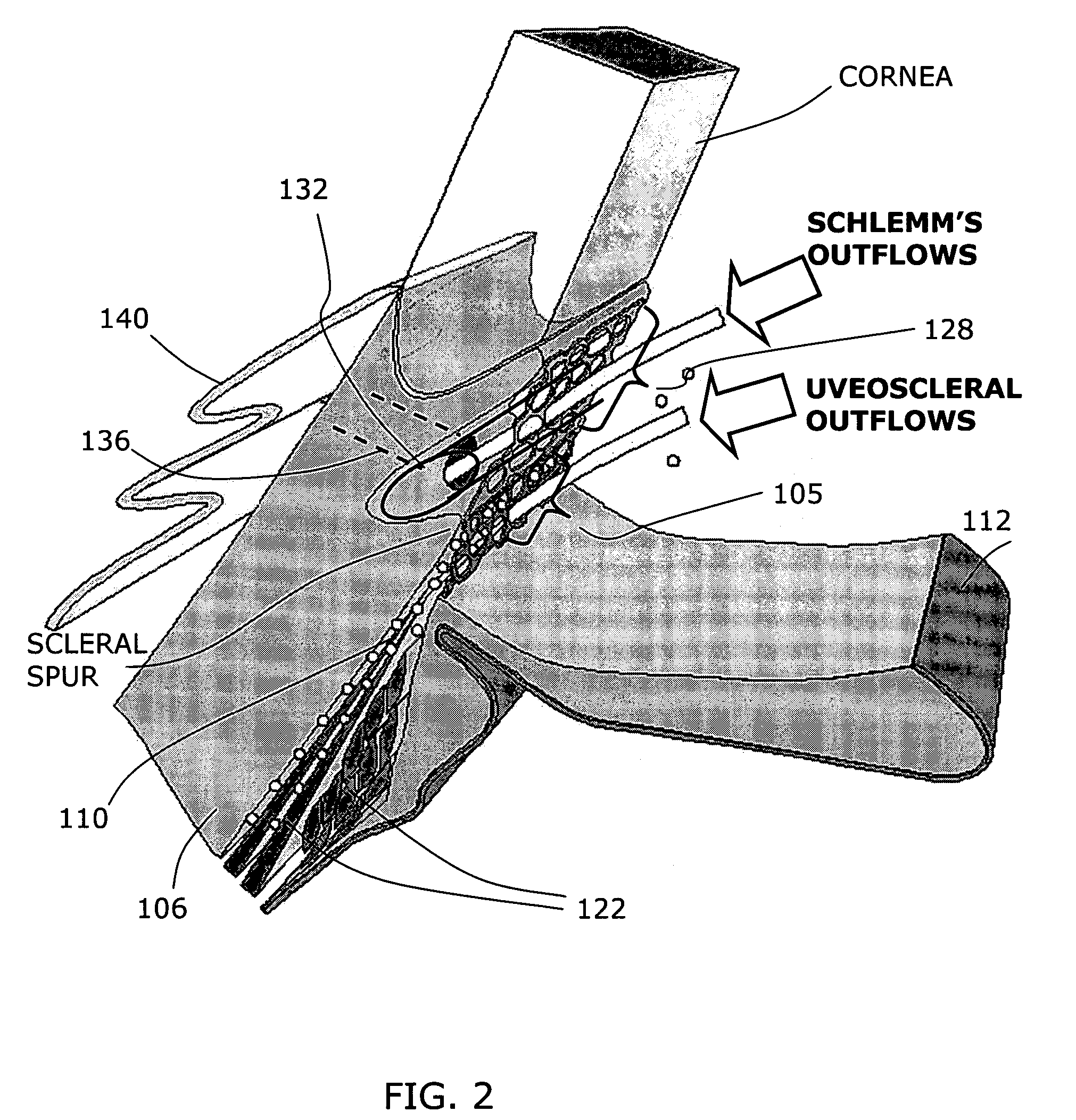Glaucoma treatment method
a treatment method and glaucoma technology, applied in the field of glaucoma treatment, can solve the problems of total vision loss, pathological changes in optic nerves, and affecting about two percent of the u.s. population, and achieve the effect of reducing the risk of glaucoma
- Summary
- Abstract
- Description
- Claims
- Application Information
AI Technical Summary
Benefits of technology
Problems solved by technology
Method used
Image
Examples
Embodiment Construction
[0047]FIG. 1 illustrates the anatomy about the anterior chamber 100 of a human eye. The present invention relates to means to enhance aqueous outflows from the anterior chamber 100 by applying energy to a targeted tissue region 105 within a narrow plane at the periphery of the anterior chamber. The anterior chamber of the eye contains the aqueous humor, a clear fluid that is produced continuously by the ciliary body. The constant flow of aqueous humor though the eye's front chamber exits through two different routes: (i) the corneo-scleral trabeculum and Schlemm's canal, and (ii) the uveoscleral route.
[0048]It has been found that light-mediated treatments of tissue about the uveoscleral route can enhance outflows. The targeted tissue in about the interface of uvea and sclera 106, and is described at times herein as the uveal-iris strands 105 (FIG. 1). The targeted tissue region 105 transitions into the uveo-scleral plane indicated at 110 in FIG. 1. The uvea of the eye consists colle...
PUM
 Login to View More
Login to View More Abstract
Description
Claims
Application Information
 Login to View More
Login to View More - R&D
- Intellectual Property
- Life Sciences
- Materials
- Tech Scout
- Unparalleled Data Quality
- Higher Quality Content
- 60% Fewer Hallucinations
Browse by: Latest US Patents, China's latest patents, Technical Efficacy Thesaurus, Application Domain, Technology Topic, Popular Technical Reports.
© 2025 PatSnap. All rights reserved.Legal|Privacy policy|Modern Slavery Act Transparency Statement|Sitemap|About US| Contact US: help@patsnap.com



